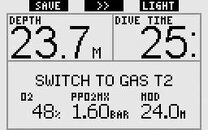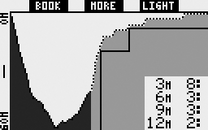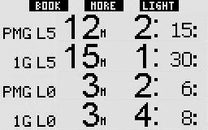diver2005
Registered
im surprised you've bought some pretty good gear even before doing OW....hope you'll love diving and enjoy your gear!!
Welcome to ScubaBoard, the world's largest scuba diving community. Registration is not required to read the forums, but we encourage you to join. Joining has its benefits and enables you to participate in the discussions.
Benefits of registering include
You've obviously dove both, so I'm sincere in asking...what exactly is more intuitive about it? The only thing I've found that's more clearly laid out and easy to navigate than a Petrel is a Cobalt, and that's skipping over the weird gas switching rules on the Cobalt.
There are some things about the Petrel that either have their subtle significance buried in the manual (like why is my gas selection suddenly yellow?) or are features I didn't even catch after reading the manual closely (like wait, I can go to Dive Planning during a dive and see all currently called for stops?!)...but in terms of just setting it up and diving it, the OC-Tec Petrel seemed a lot easier to navigate to me than the SP computers. I've never tried the OC-Rec version, but it's got to be even simpler. If one were to leave it in CC/OC, or fail to learn how gradient factors work, then the Petrel becomes a more confusing beast to be sure. But I'm not sure I equate more simplistic conservatism with more intuitive...and there's always VPM.



